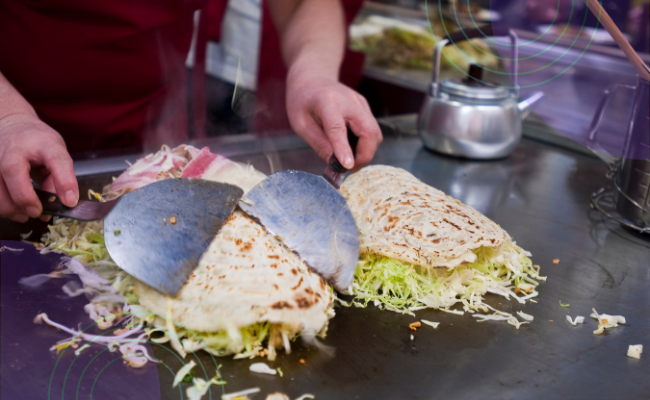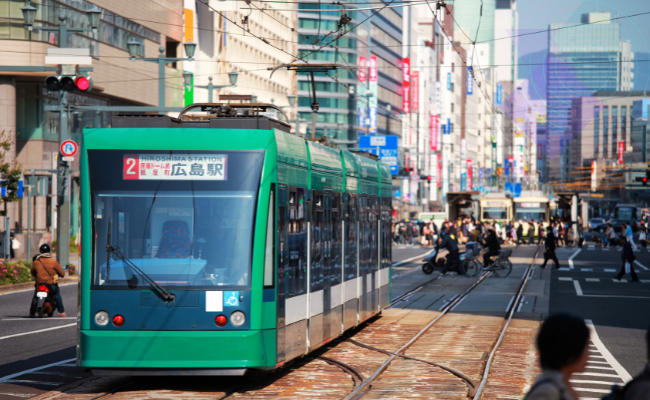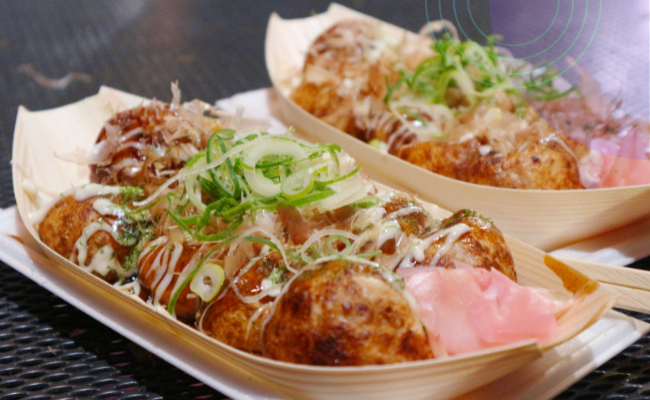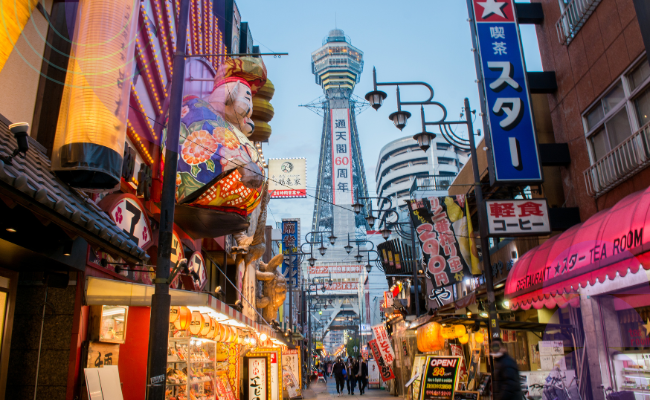Traveling mindfully and sustainably takes planning and effort, and can sometimes be expensive.
This leads to the usual cycle– you want to do good, but you don’t know where to begin, and you end up not doing anything.
No matter how small, actions do matter. Below are 5 easy ways to travel more sustainably on your next trip to Japan.
5 easy tips at a glance:
- BYO reusable bag and water bottle
- Eat vegan
- Don’t use oshibori
- Utilize the bike-share system
- Go thrift shopping
BYO Reusable Bag and Water Bottle

It is very common in Japan to buy bottles of water or tea from one of the many vending machines or combinis (convenient stores). Don’t fall into this trap. You will end up buying several bottles every day, which can add up very quickly over time.
Instead, pack a reusable water bottle and bring it with you everywhere. Tap water is clean throughout the country, so you can easily fill it up in your hotel room.
Along the same lines, try to bring an extra shopping bag with you wherever you go. Get one that’s foldable so that you can easily stick it in your bag and take it out when needed.
Whether it’s groceries, souvenirs, or some new clothes, use your own bag to carry them home.
How to refuse something in Japanese:
Simply say, “Fukuro wa ii desu” (No bag please).
Or, when they are pulling out the plastic bag stop them by saying, “Iidesu,” or “Daijobu desu.”
Both mean “it’s okay.”
Eat Vegan (as much as possible)

With vegan and vegetarian food making a big splash in Japan, it’s becoming increasingly easier to eat less meat.
While veganism is still far from being mainstream, you can find at least one vegan-friendly restaurant in every neighborhood in Tokyo.
These are a few useful websites to help you eat vegan in Japan:
- Vegewel: Lists restaurants with vegan/vegetarian/gluten-free options
- Is It Vegan: Lists vegan products in Japan
- Happy Cow: Reviews of vegan/vegetarian restaurants
For a jump start into the vegan options available in Tokyo, you can also join one of Foodie Aventure’s vegan food tours! You will get tips on shopping for food as a vegan, vegan options at combinis, and go to some of the best, tucked-away vegan restaurants.

Similarly, try to eat local instead of at large chain restaurants. Local restaurants are more likely to purchase their ingredients locally, which means fresher produce with a smaller carbon footprint.
Don’t use oshibori

Oshibori are wet napkins given to you before a meal at every restaurant in Japan. They are used to clean your hands and are beloved as they are very refreshing.
However, they are often used as napkins as well. Most people keep their used oshibori at the table and use it for the rest of the meal to wipe their mouths.
However, most are wrapped in plastic and produce a lot of waste. If you eat out twice a day, that’s a lot of plastic by the end of your trip.
So, forego the oshibori and simply wash your hands before a meal.
Since plastic waste is abundant in Japan, this is an easy way to reduce your contribution to the problem.
Utilize the bike-share system
https://www.instagram.com/p/B0Qj1XaAPiv/?igshid=jkdtwdni6di
Tokyo has a great bicycle-sharing system, operated by Docomo. Once you register online, you can pick up a bike from one of their hubs in 11 of Tokyo’s wards, as well as in Yokohama, Osaka, Hiroshima, Nara, and Sendai.
The registration site is in Japanese, but you can use this step-by-step English guide to help you.
At the end of your ride, you can drop your bicycle off at any other bike hub.
One ride costs ¥150 for the first 30 minutes, and ¥100 for every 30 minutes afterward.
If you are staying in Tokyo for a while, you can purchase a monthly membership, which costs ¥2000 and the first 30 minutes of a ride is completely free.
Go Thrift Shopping

If you’re going to go shopping, opt for buying second-hand instead of new.
Luckily, Tokyo is a haven for thrift shoppers. There are many different neighborhoods famous for thrifting, such as Harajuku, Shibuya, Gakugeidaigaku, and Koenji, but the epicenter is Shimokitazawa.
Every street has dozens of thrift stores, and you can easily spend days, if not hours, perusing and making your way through each shop.
Thrifting in Japan is a completely different experience than what you are probably used to– you will not have to sift through stained, worn shirts with a funky odor. Everything is high quality, carefully curated, and reasonably priced to beat. There is really no reason to buy new clothing when you have such amazing second-hand options at your fingertips.





